Toward an operational tool to integrate land degradation neutrality into land use planning: LUP4LDN

Authors:
Land use planning (LUP) to achieve Land Degradation Neutrality (LDN) needs methods and tools that support the identification of best LUP solutions in terms of transitions from current degradative land use (LU) and land management (LM) practices to better LU and LM options. A crucial need is the identification of context specific sustainable land management (SLM) options. Addressing this need must aim at not only reversing/recovering past degradation (e.g., via restoration or rehabilitation in land degradation hotspots), but also avoiding “new” degradation possibly caused by unsuitable LU and LM. This requires SLM planning based on anticipated impact assessment of the LU-LM transition scenarios set to achieve LDN, which can be achieved through a participatory planning process that integrates interests/needs and knowledge of stakeholders with science-based supportive tools to identify rational, plausible, and socially relevant options. The geoinformatics Land Use Planning for LDN (LUP4LDN) conceptual procedure and tool have been designed for this purpose. Their aim is to support national and subnational planners by (i) mapping geographic patterns of past land degradation (LD) utilizing the LDN indicators adopted by the UNCCD (SDG 15.3.1 indicator) for user-defined regions of interest (RoI); (ii) helping users anticipate future LD by identifying land that is unsustainably managed and that will likely become degraded during the planning period; (iii) partitioning the LD areas into spatial domains of socio-ecological contextual similarity (i.e., contextual similarity units) to which the LU-LM transitional options will be fitted; and (iv) providing an interactive procedure for participatory LU-LM transitional scenario development over selected contextual similarity units and timeframes. LUP4LDN uses the Global Database of the World Overview of Conservation Approaches and Technologies (WOCAT), ICARDA's Geoinformatics Options by Context (GeOC) tool, and ELD (Economics of Land Degradation) indicators to identify context-relevant SLM that are available in the RoI, suggests candidate SLM options, and visualizes related expected levels of impacts on ecosystem services via maps and graphs. The generated maps inform users about trade-offs upon which users can discuss or negotiate transitional pathways. LUP4LDN has been codeveloped with national stakeholders in Tunisia and Burkina Faso. The piloting implementation in the two countries assessed how LUP4LDN fits with existing LUP processes and the benefits achieved by using the tool to support LUP for LDN.
